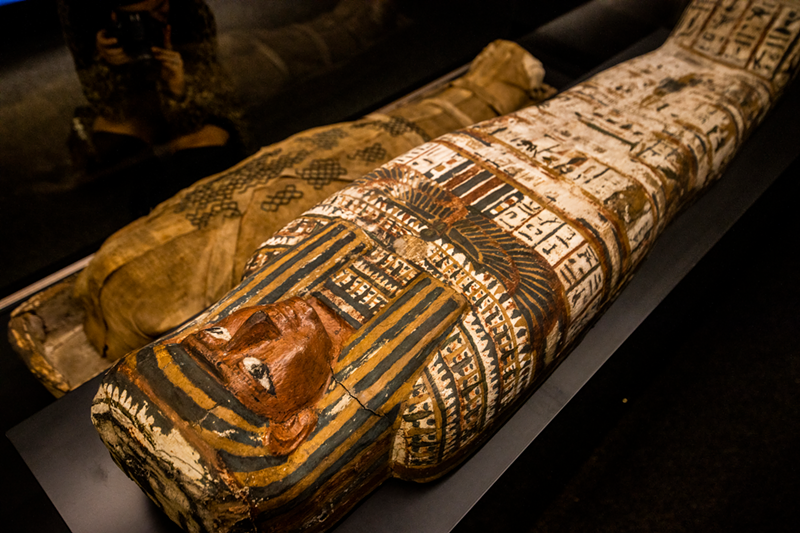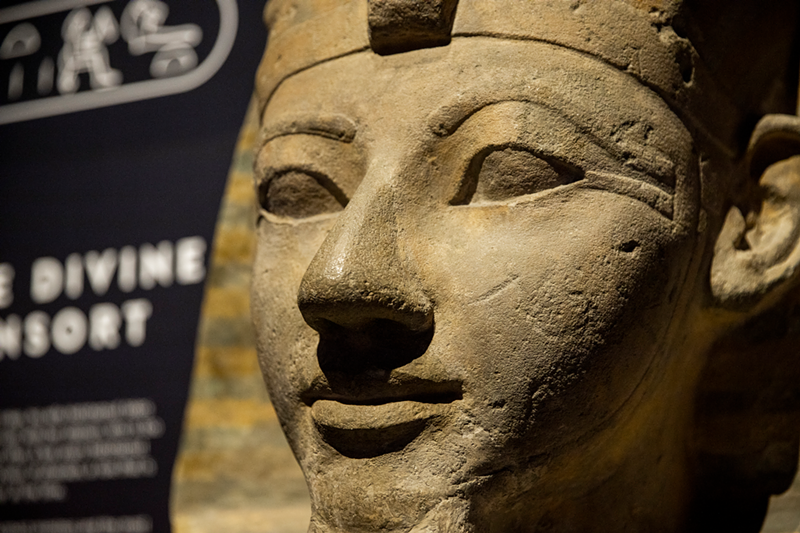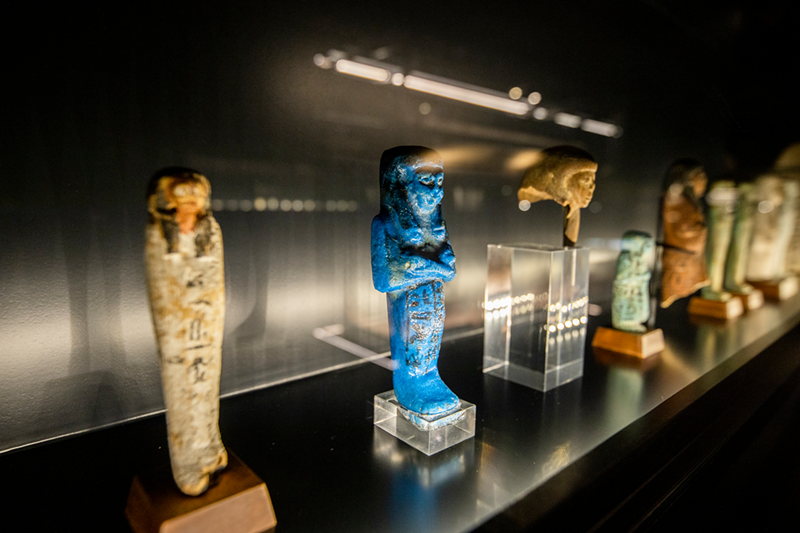Ancient Egypt now resides inside the Cincinnati Museum Center via a collection of artifacts dating back more than 4,500 years. Making its U.S. debut, Egypt: The Time of Pharaohs gives a sweeping look at Egyptian life five millennia ago, from the gods they worshipped to the flourishing arts scene to the everyday lives of both commoners and the ruling class.
The show boasts over 350 original artifacts and is heralded as the largest exhibition of ancient Egyptian items to ever go on the road. Items featured are pulled from the University of Aberdeen Museums in Aberdeen, Scotland; the Roemer und-Pelizaeus Museum in Hildesheim, Germany; the Berlin Egyptian Museum in Berlin, Germany; and the Gustav-Lubcke-Museum in Hamm, Germany.
“Four-thousand-five-hundred years; let’s think about that for a moment,” said CMC’s President Elizabeth Pierce at The Time of Pharaohs’ opening. “Together we will marvel at the beautiful stonework, ornate sarcophagi, meticulously prepared mummies and original papyrus depicting Egyptian myths. And we will transport back in time to the land of hieroglyphs, pyramids and god-kings and queens.”
Upon entering the space, visitors are greeted by a projected image of the Nile River, which stretches across an entire length of wall. The image visually grounds the exhibit and is the backdrop for cases upon cases of artifacts, each adding their own revelation about this culture and people. As Wafaa El-Saddik, the former director of the Egyptian Museum in Cario, puts it: “The Nile, for us in Egypt, is our life — since ancient Egypt to today. And it defines its entire history and culture.”
At the show’s opening, El-Saddik said The Time of Pharaohs provides an accessible experience for kids and adults alike that gives “perspective on the Egyptians’ way of life and socio-cultural structure.”
Notable items on display at the Museum Center include the sphinx head of the pharaoh Hatshepsut, one of Egypt’s most prolific rulers who presented herself as a king rather than a queen; and a slab stela of lunu, or a horizontal tablet, which is one of the best preserved on display. It depicts an administrator of pharaoh Khufu stretching his hand toward an offering table. (Khufu is believed to be the pharaoh who ordered the building of the Great Pyramid of Giza.)
Also on display are numerous statues depicting gods and goddesses, as well as animals, like a resting lion and two uraeus snakes — upright cobras which symbolized protection and, like the sun god Ra, were crowned with golden solar discs.
That theme of zoomorphism runs throughout The Time of Pharaohs: Animals were seen as sacred to ancient Egyptians, as it was thought that gods could be reincarnated into animal forms. Main deities were frequently depicted with animal features, like Anubis, the god of the afterlife, who has the head of a jackal. Near the tail-end of the exhibit, there’s even a mummified cat on display.
Other sections of the exhibit feature a timeline of ancient Egypt’s various historical periods, hieroglyphs, a papyrus fragment with a scene from the Book of the Dead, and impressive miniature replicas of various temples and housing. Regine Schulz, the curator of the exhibit and director of the Roemer- und-Pelizaeus Museum, noted Egyptian culture’s lasting worldwide impact at the opening of The Time of Pharaohs.
“We want to tell the story of the people and the development,” she said.

The sheer amount of artifacts — many in remarkable condition despite their age — are joined by modern replicas and features. Perhaps most notable is what Schulz says is the world’s first three-dimensional mummy hologram, which is the last thing visitors will see before leaving the space.
The hologram in question depicts the embalmed body of Ta-khar, a wealthy woman from the city of Thebes. (Her mummified body itself is in a coffin in another room.) Using CT scans, researchers were able to view the deceased’s internal organs to glean insight into how her body was preserved without needing to unwrap the 50 layers of linen she was put to rest in.
Aside from the aforementioned cat and Ta-khar, a few other mummy-related artifacts can be seen. The coffin of Nakht is most notable, perhaps. An Egyptian official, Nakht was an astronomer, scribe and priest. The coffin mimics a palace; from the interior, its occupant could see outside through a pair of drawn eyes, which could allow him to join the sun god’s regeneration with each sunrise.
Egypt: The Time of Pharaohs runs through Aug. 18. More info/tickets: cincymuseum.org. View our full photo gallery here.








